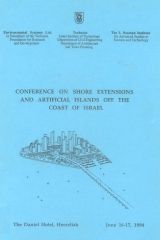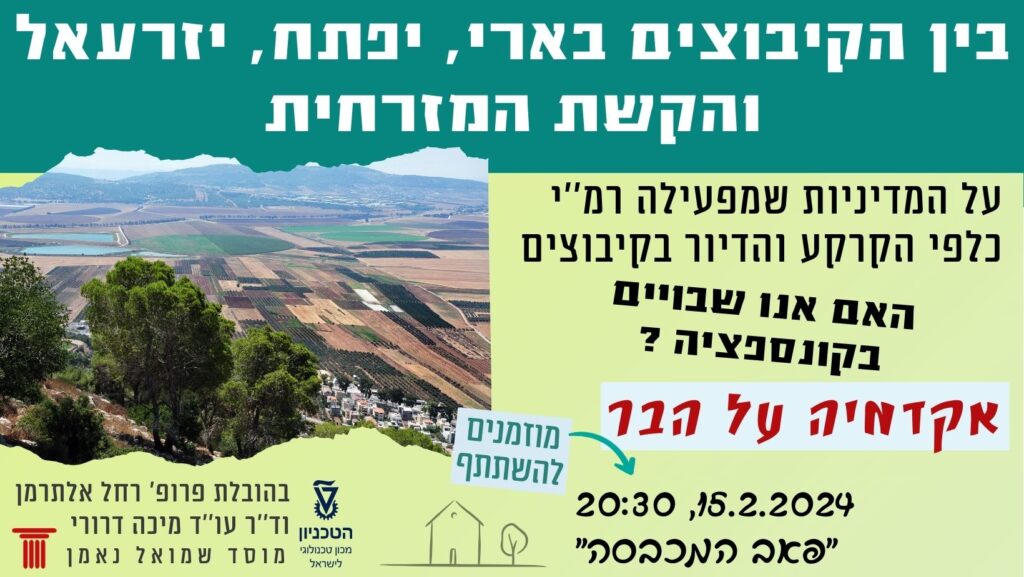The construction of a series of artificial islands off the shoreline of Israel constitutes a clear necessity towards the end of this decade and during the first half of the coming century. This is due to the pressing utilization and need for development of the coastal strip in general and the severe shortage of land for urban development in the greater Tel-Aviv area and in Haifa, in particular. With capital investment of tens of billions US dollars during the coming 50 years this is going to be one of the largest endeavour in the Israeli economy. In the first stage, the construction of three artificial islands off the coast of Tel-Aviv with an average area of approximately one square kilometer (1000 dunams) per each island, at a distance of about 1000 meters off the shoreline is considered. Similarly, at least two islands with approximately the same dimensions should be constructed in the Haifa Bay. The possibility of construction of islands off the coast of Herzeliah, Netania, Hadera, Atlit, Ashdod, Ashkelon, Cesaria, Acre and Naharia should also be investigated in the future. The construction of an island opposite Gaza is considered by international bodies in collaboration with the Autonomy establishment. For such a national task, the Technion-Israel Institute of Technology, has organized a task force, together with the Samuel Neaman Institute for advanced Studies in Science and Technology (with the participation of the Israel Electric Company) and through the Technion Foundation for Research and Development subsidiary Company Environmental Systems Ltd., to carry on this endeavour. Israel Land Authority has also participated by supporting the preliminary work aimed at the Tel-Aviv coastline and a most important contribution was made through the Holland-Israeli cooperation program where some of the important aspects related to the pre-design of the islands in Israel are performed in the Netherlands by some of the world’s most renown experts. Other Technion experts in various fields, notably in architecture, town planning and various engineering fields, as well as private consulting engineers and town planners have been involved in this project. Part of these activities is reflected in this Conference (June 1994) by oral presentations of Shelef, Waterman, Burt, Zimmels, Agema, Zwemmer, Boas, Wertheim, Prusk, Raanan, and others.
 / Publications / Conference on shore extensions and artifical islands off the coast of Israel
/ Publications / Conference on shore extensions and artifical islands off the coast of Israel











